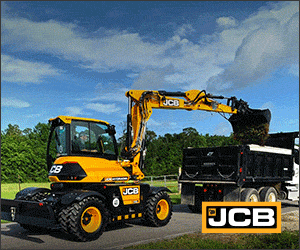By Kate Borg
The use of the alliance model for project procurement may be new to owners and developers in Canada, but this form of collaborative contracting already has roots in other countries. Countries like the United Kingdom and Australia have already been using this approach for decades, and the successes they have realized in doing so can now be applied to the Canadian market.
In the Australian market in particular, the alliance contracting model has been in use for over two decades in the transit and transportation sectors. In those sectors, alliance is generally used when there is high-risk, technical complexity, and a capital cost of more than $50M AUD ($45M CDN). Because the alliance model carries a significant up-front investment, it does not suit all project types.
In Australia, there are two types of alliance procurement: pure alliancing and competitive alliancing. In both cases, there is a proposal and evaluation period that involves multiple proponents. Pure alliancing offers a short window with two proponents taking part in a workshop period before the final proponent is named. In competitive alliancing, two proponents participate in the Alliance Development Agreement (ADA) phase, both proponents are evaluated, and a successful proponent is then selected. Competitive alliancing was adopted to ensure that there was still commercial competitive tension within the procurement phase while still assessing the behaviours of the teams. In both cases, the project owner is part of the alliance, taking an active role in the decision-making process for the delivery of the project.
When countries have done their initial adoption of alliance contracting, the starting point is usually pure alliance contracts. This is what is being implemented in Canada today.
Spotting the differences
It’s important to understand how alliance contracting differs from traditional design-build projects here in Canada.
The biggest difference between this more traditional form of project procurement and the collaborative alliance contracting is that you are assessed on your behaviours and how you work together as a team. Significant time is spent in pre-construction working together to build a real culture of collaboration among the project partners. This helps build a set of shared expectations between the owner and contractor, building a strong mutually-beneficial partnership among the parties.
There are a few additional key differences between traditional and collaborative contracting models:
- The owner or client is part of the delivery team and a member of the alliance.
- A best-for-project approach to delivery and appointment of people;
- A value-for-money approach to decision-making;
- A series of key result areas that have combined key performance indicators (KPIs) to be met by all of the alliance participants; and
- A “no claim” philosophy to project delivery.
Alliancing also adopts an open book policy to the financial management of the project. There are no secrets related to the costs associated with the project, be it personnel or material related. All project costs are kept in an open forum, where they can be evaluated by all project partners.
Because of the up-front work involved in understanding the behaviours of the partners involved in the project, in place to help manage and mitigate risk, alliance projects can be seen as an expensive proposition. It can therefore be seen to be not worth adopting for projects that have a low or readily definable risk profile.
The true cost of litigation resulting from traditional models, compared to the overall cost of the alliance model, has not really been compared properly in Australia. This has led to some skepticism about the value of the model when historically reviewing alliancing. However, it is my general view that the value of seeking claims, and the stress that this places on the private businesses, significantly outweighs the cost of collaboration.

Lessons learned with alliance
There are several reasons why this form of collaborative contracting has the opportunity to create a stronger end result for infrastructure projects in Canada. These observations become clear for all parties when they work together to execute the contract:
- There are no secrets among the alliance partners, and all risks are discussed between the participants rather than hidden away for commercial advantage.
- Confrontational discussions relating to commercial, or risk, decisions are non-existent.
- There is a camaraderie when delivering the project and knowledge is shared rather than restricted between parties.
- The alliance participant teams enjoy coming to work and working together to solve any problems that emerge throughout the process.
- The owner or client participant benefits by being part of the project delivery developing a more mature client for future projects.
The focus is placed on the need to execute a strong project for the community it serves, rather than any competitive advantages or corporate restrictions that can create roadblocks during project execution.
Collaborate to strengthen the local market
Use of the alliance model in Canada could also help prevent some of the contractor pitfalls experienced in the Australian market. It is unfortunate to observe that, the use of aggressive models inciting a race to the bottom and government expectations on who should carry unknown risk, has led to Australian contractors no longer being owned by the Australian people. Local contractors could no longer makes ends meet in that market, forcing them to sell their operations to international companies. Governments need to understand that seeking best value for public funds does not mean at the expense of bankrupting local contractors.
The way that this pitfall can be avoided is through alliance contracting, and other similar collaborative contracting models. Working together focuses efforts on the real end result, creating an asset that provides value for a community or communities over the entire life cycle. When the contract is about nothing more than the immediate dollars invested, the projects that result rarely meet more than the immediate need, which can lead to significant cost concerns when before the asset should have completed its usable life.
I believe collaborative contracting has changed the industry. Even on traditional models, it is business as usual for designers, contractors, and client teams to all sit together to deliver the project. Collaborative contracting has infiltrated the traditional models making project delivery more certain and less adversarial, which results in better project delivery for everyone.
With the Union Station Enhancement Project getting underway this year, Canada’s first use of the alliance contracting model for a public sector infrastructure project, it will be important to implement the lessons learned from the Australian experience to create a positive, collaborative experience for all parties involved.
[This article originally appeared in the March/April 2022 edition of ReNew Canada.]
Kate Borg is the alliance design manager for OnTrack Alliance at WSP in Canada.
Featured image: Australia’s history with Alliance contracting, including in transit development in Melbourne, can provide Canada with the knowledge it needs to properly execute the procurement model in this country.
















